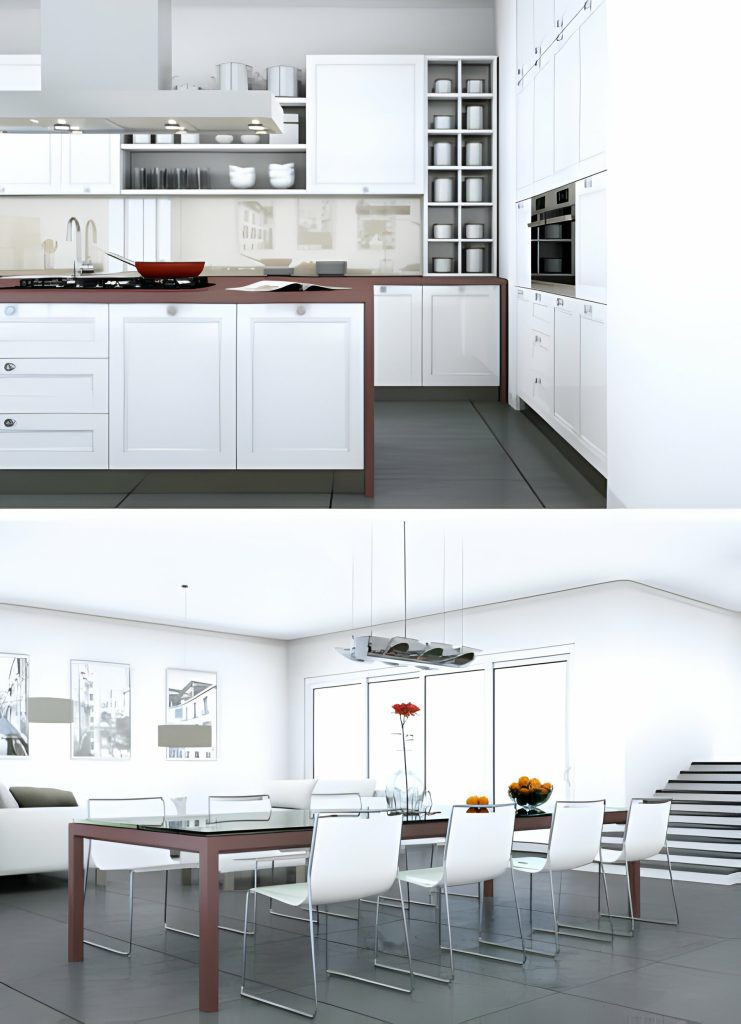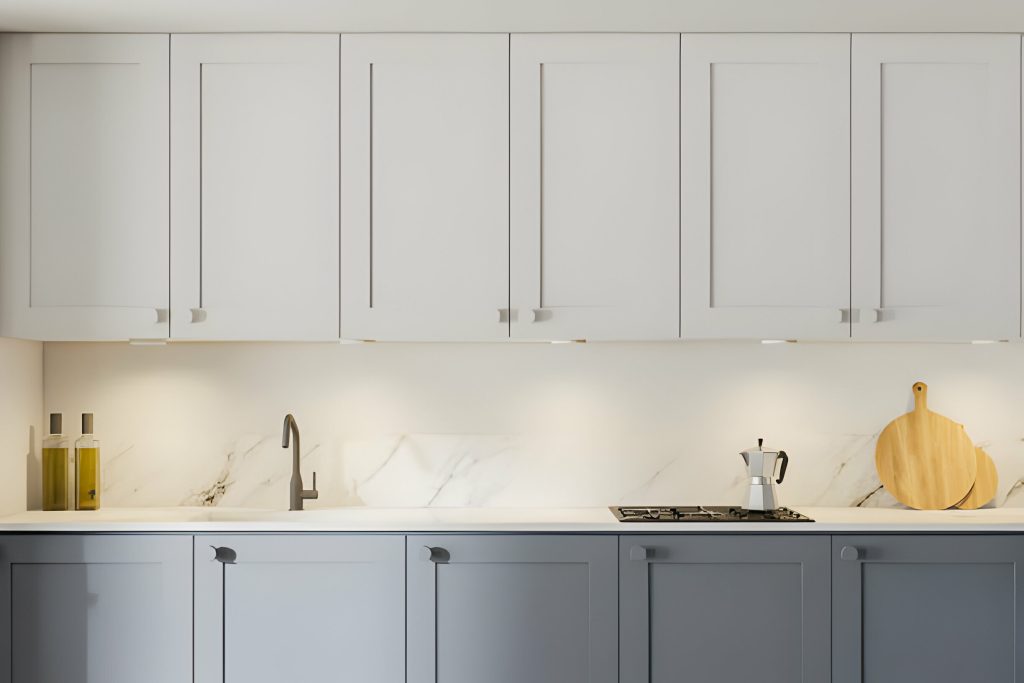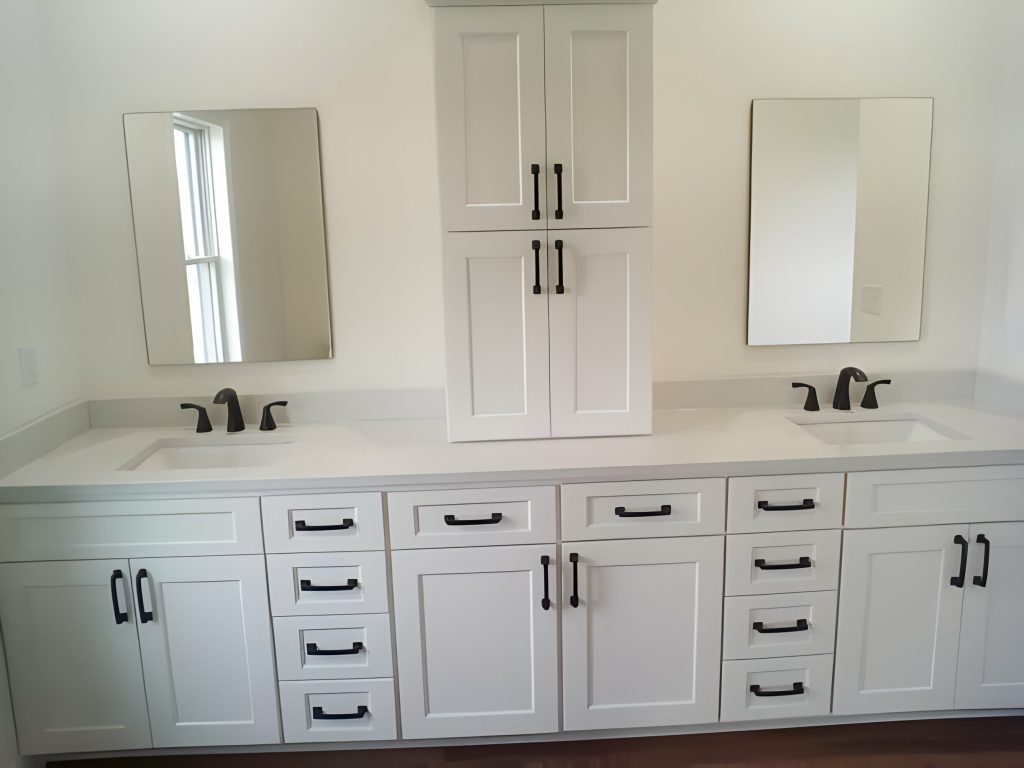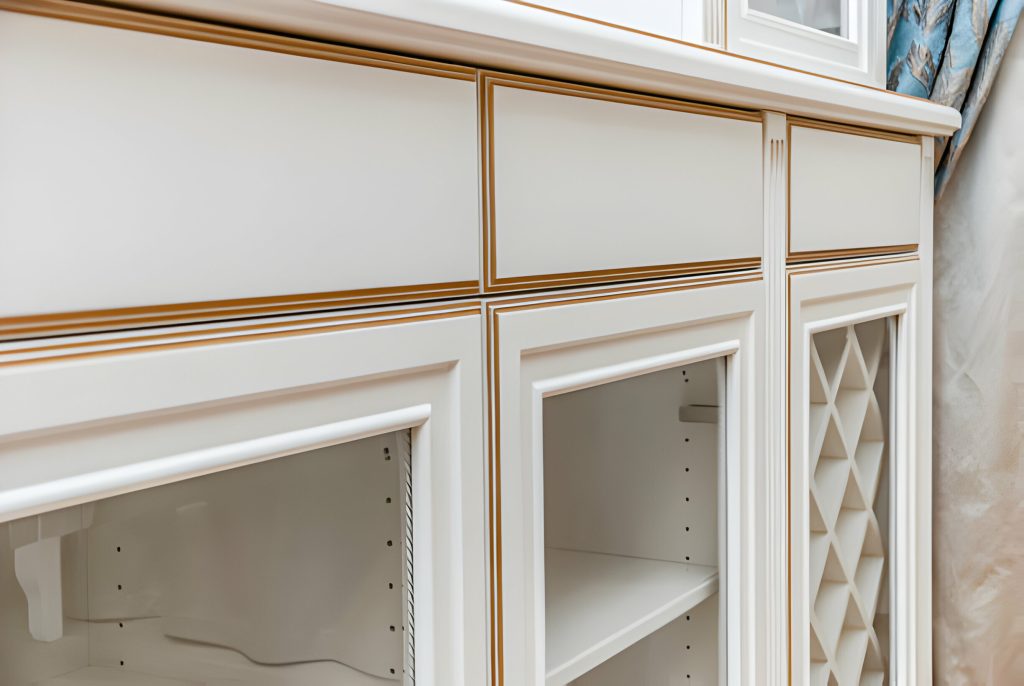Do you ever wonder what sets inset cabinets apart from regular cabinets? Well, get ready to have your kitchen renovation game changed! In this article, we’ll dive into the fascinating world of cabinet construction and explore the key differences between inset and regular cabinets. From design to installation, functionality to maintenance, we’ll cover it all so you can make an informed decision for your dream kitchen. So grab a cup of coffee and let’s get started!
Understanding Cabinet Construction
To understand cabinet construction, you’ll need to know the difference between inset and regular cabinets. When it comes to cabinet materials, both inset and regular cabinets can be made from a variety of options such as wood, laminate, or MDF. As for door styles, you have endless choices whether you prefer traditional raised panel doors or sleek modern slab doors. When it comes to hardware options, both types of cabinets offer a wide range of handles, knobs, and hinges that can complement your overall design aesthetic. Color choices are also important as they can greatly impact the look and feel of your space. Lastly, budget considerations play a significant role in choosing between inset and regular cabinets as inset cabinets tend to be more expensive due to their precise craftsmanship.
Defining Inset Cabinets
If you want a more seamless and flush look for your cabinets, opt for inset ones. Inset cabinets are a popular choice among homeowners looking for a clean and sophisticated design. The main difference between inset and overlay cabinets is how the doors are positioned. With inset cabinets, the doors sit inside the frame, creating a sleek appearance. This style offers several benefits, including a high-end look, smooth lines, and a furniture-like feel. However, there are some drawbacks to consider as well. Inset cabinets tend to be more expensive than overlay options due to their precise craftsmanship requirements. Additionally, the narrow gaps can make it harder to access items stored inside the cabinets. Popular styles of inset cabinets include Shaker, Beaded Inset, and Raised Panel designs.
Defining Regular Cabinets
Regular cabinets are a more common choice among homeowners, offering a versatile and practical design for storing kitchen essentials. They come in various styles, allowing you to find the perfect fit for your kitchen aesthetic. Some popular choices include shaker style cabinets, which have clean lines and a timeless appeal, and raised panel cabinets, which add depth and dimension to the space. Regular cabinets offer several pros such as affordability, easy installation, and availability in a wide range of materials. However, they may lack the high-end look of inset cabinets and can sometimes have limited customization possibilities. Despite these cons, regular cabinets remain a popular option due to their wide variety of design options and budget-friendly nature.
Examining the Design Differences
When choosing cabinets for your kitchen, it’s important to consider the various design options available. Cabinet finishes, material options, hardware choices, customization options, and design trends all play a role in creating the perfect look for your space.
One key design difference to consider is whether you prefer inset or regular cabinets. Inset cabinets have doors that are set flush with the face frame of the cabinet, creating a clean and seamless appearance. On the other hand, regular cabinets have doors that overlay the face frame.
To help illustrate this difference further, here is a comparison table:
| Inset Cabinets | Regular Cabinets | |
|---|---|---|
| Appearance | Flush | Overlay |
| Hardware | Visible | Hidden |
| Customization | Limited | Versatile |
| Trend | Classic | Contemporary |
As you can see from the table above, inset cabinets offer a timeless and classic look while regular cabinets provide more flexibility in terms of hardware and customization options. Consider your personal style preferences and overall design aesthetic when making your decision.
Exploring the Installation Process
Exploring the installation process can help you understand how cabinets are properly mounted in your kitchen space. Here’s what you need to know:
- Measuring accuracy: Before beginning the installation, it is crucial to measure the dimensions of your kitchen accurately. This ensures that the cabinets fit perfectly into the designated space.
- Hardware installation: Once the measurements are done, it’s time to install the hardware. This includes attaching hinges, handles, and drawer slides to ensure smooth functionality.
- Door alignment: Proper door alignment is essential for a seamless look. Adjusting the hinges and ensuring they are level will guarantee that your cabinet doors hang straight and close properly.
- Final adjustments: After everything is installed, take some time to make final adjustments. Check for any gaps or uneven surfaces and make necessary tweaks for a polished finish.
Understanding these steps will enable you to have a successful cabinet installation in your kitchen space.
Comparing the Cost Factors
To accurately compare the cost factors, you’ll want to consider the materials used, the cabinet style you choose, and any additional customization options. When it comes to cost factors, budget considerations play a crucial role in determining which type of cabinet is right for you. Inset cabinets tend to be more expensive than regular cabinets due to their intricate construction and precise installation. The price comparison between these two styles can have significant financial implications for your project. It’s important to conduct an affordability analysis that takes into account not only the initial cost but also long-term maintenance and durability. By carefully evaluating these cost factors and conducting a thorough price comparison, you can make an informed decision that aligns with your budget and meets your design preferences.
Analyzing the Durability and Longevity
You’ll want to take into account the durability and longevity of the cabinet style you choose, as this will impact how well it withstands daily wear and tear over time. When analyzing the durability of cabinets, it’s important to consider factors such as material quality and impact resistance. Comparing the longevity of different cabinet styles can help you make an informed decision. Here are some key points to consider in your evaluation:
- Durability analysis: Assess how well each cabinet style holds up against various types of damage.
- Longevity comparison: Compare the expected lifespan of different cabinet styles.
- Material quality: Evaluate the strength and resilience of the materials used in each cabinet style.
- Impact resistance: Consider how well a cabinet style can withstand accidental bumps or knocks.
- Wear and tear evaluation: Examine how each cabinet style fares against everyday use and aging.
Considering these factors will ensure that you choose a cabinet style that is built to last and can withstand regular use without losing its functionality or aesthetic appeal.
Evaluating the Aesthetic Appeal
When considering the aesthetic appeal of different cabinet styles, it’s important to evaluate how well they complement the overall design and style of your space. Start by evaluating aesthetics and comparing styles to see which one aligns best with your vision. Take into account the finishes available for each style and explore color options that will enhance the look you’re going for. Consider design elements like hardware, door profiles, and decorative accents, as these can greatly impact the overall aesthetic appeal. Whether you prefer a sleek modern look or a more traditional feel, make sure to choose a cabinet style that harmonizes with your existing decor. By carefully evaluating these factors, you’ll be able to select cabinets that not only meet your functional needs but also contribute to the visual beauty of your space.
Considering the Functionality and Storage Options
Take into account your storage needs and the functionality you require when choosing a cabinet style. Inset and regular cabinets both offer different options for functionality and storage capacity. Consider these factors to make an informed decision:
- Functionality options: Inset cabinets provide a sleek and seamless look, while regular cabinets offer more flexibility in terms of design and customization.
- Storage capacity: Regular cabinets typically have more interior space due to their larger frame, allowing for greater storage capacity.
- Organization solutions: Both inset and regular cabinets can be equipped with various organization accessories like drawer dividers, pull-out shelves, and spice racks to maximize organization.
- Accessibility features: Regular cabinets often come with full-extension drawers or soft-close hinges for easy access, while inset cabinets may require additional hardware for similar accessibility features.
- Space utilization: Inset cabinets are flush-mounted within the cabinet frame, which optimizes space utilization by minimizing wasted space.
Consider these factors to choose the cabinet style that best suits your functionality needs, storage requirements, organizational preferences, accessibility desires, and space utilization goals.
Discussing the Maintenance and Cleaning Requirements
Maintaining and cleaning your chosen cabinet style is essential for preserving its appearance and longevity. Whether you have inset or regular cabinets, proper care will ensure they stay in top shape for years to come. Here are some maintenance requirements, cleaning tips, and upkeep guidelines to keep your cabinets looking their best:
| Maintenance Requirements | Cleaning Tips | Upkeep Guidelines |
|---|---|---|
| Regular dusting with a soft cloth | Use a mild detergent mixed with warm water for deep cleaning | Avoid using abrasive cleaners or harsh chemicals |
| Check hinges and hardware regularly | Wipe spills immediately to prevent stains or damage | Apply furniture polish occasionally for added shine |
| Tighten loose screws as needed | Clean glass doors with a non-ammonia based cleaner | Avoid excessive moisture or humidity |
Making the Right Choice for Your Kitchen Renovation
If you’re considering a kitchen renovation, it’s important to make the right choice for your cabinet style. Your cabinet selection will play a significant role in the overall design and functionality of your kitchen. Here are some design considerations to keep in mind when making your decision:
- Budget: Determine how much you are willing to spend on cabinets.
- Style: Choose a cabinet style that complements the overall aesthetic of your kitchen.
- Material: Consider the durability and maintenance requirements of different materials.
- Storage needs: Assess your storage needs and select cabinets that offer sufficient space.
- Installation process: Research the installation process involved with different cabinet styles.



